
FRMCS
From GSM-R to FRMCS

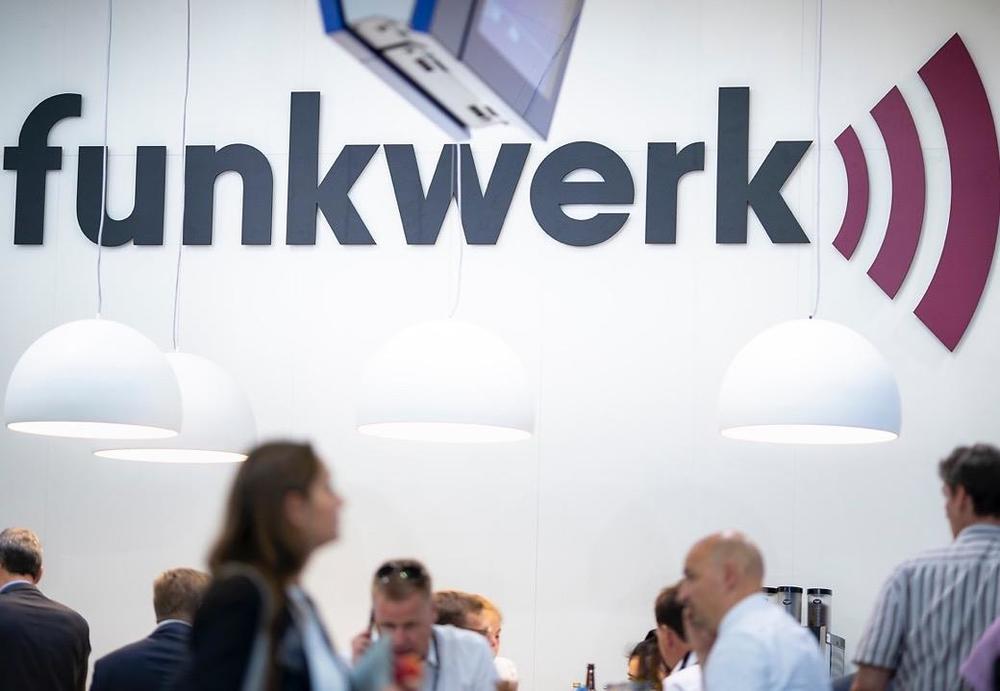
FRMCS in a nutshell
- A first phase based on 5G in a special frequency band (n101, 1900 MHz ..1910 MHz), but basically transmission layer and application layer is separated: other transport (Wifi, Satellite, 6G…) can be used too
- The current band (n100, around 900 MHz FDD) will be available too
- FRMCS speaks about a wide range of functions, which are separated and independed from each
- It is based on MCX (MC: mission critical) services MCPTT, MCDATA, MCVIDEO from “blue light” communitywith an additional number of functions
- It should provide a unified solution for telecom on board (“Toba box”): one gateway for all operational communication on a vehicle.
GSM-R and FRMCS Frequencies
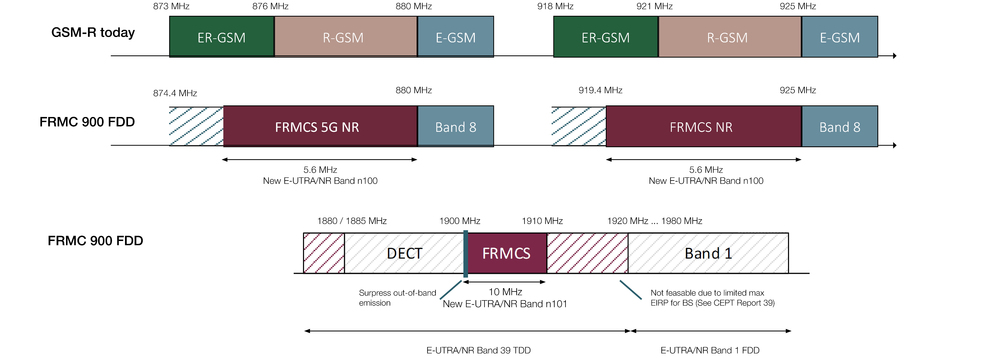
FRMCS Status standardization - FRMCS V1
- A first phase for the introduction of a new class A radio system has been completed with the FRMCS v1 specifications (as part of the TSI CCS 2023, FRMCS Baseline 0, «FRMCS Ready»).
- Work on FRMCS v2 has started. It will be the baseline for larger FRMCS pilot projects such as MORANE 2.
- Funkwerk is supporting this standardization of different levels and working groups.
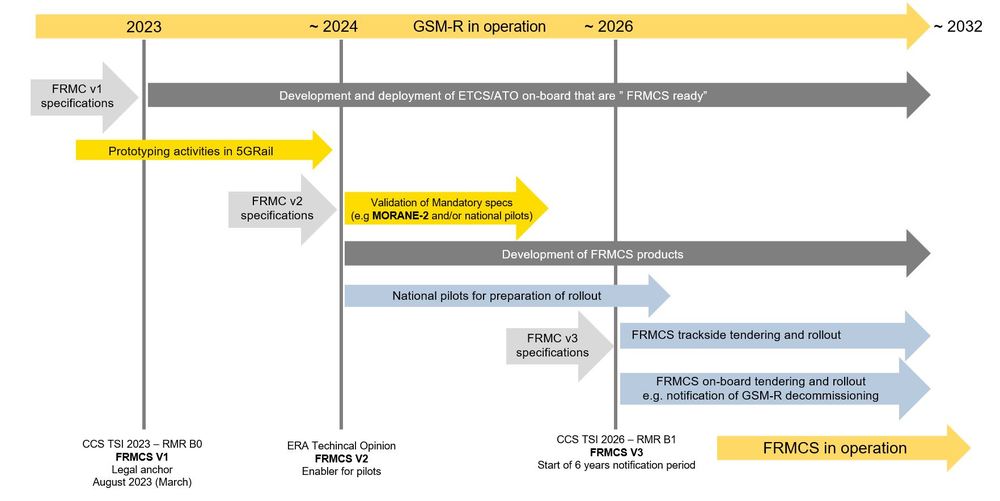
The advantages of the FRMCS migration to current radio communication systems
Upgradeability for future requirements
- Modular system architecture
- Multi-Mode Systems:
Analogue Radio (Class B) / GSM-R / 4G / 5G / FRMCS
Optimized antenna solutions
- Use of one dual mode antenna for FRMCS and GSM-R
- No additional antennas for FRMCS necessary
Centralized system operation
- Operation of GSM-R and FRMCS via the existing HMI
- Ease of use for operators
Cost optimization
- Further use of existing system components
- Investment in additional FRMCS components only:
Radio Modules / FRMCS Gateway
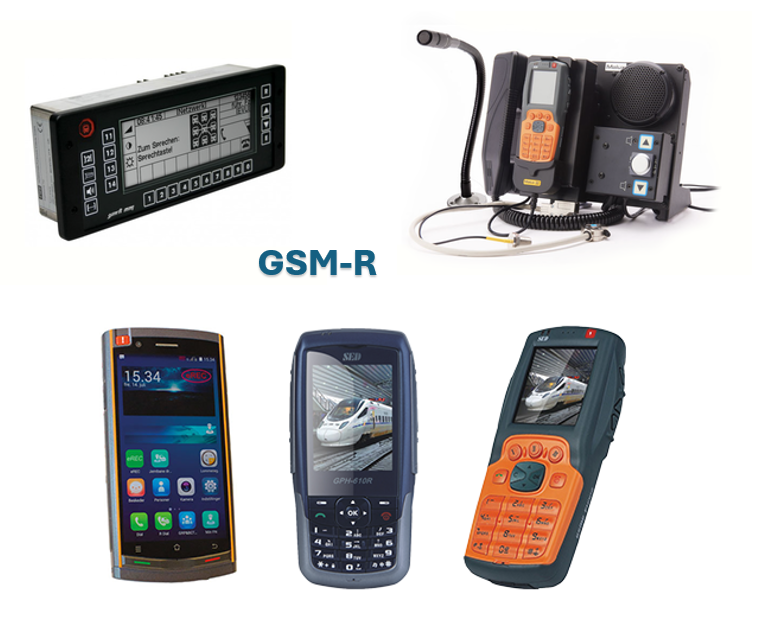
Should we upgrade our existing GSM-R solutions or wait for FRMCS?
For a railway operator, this is one critical question!
The answer is easy; Continue buy and upgrade GSM-R devices. You'll need it for your ongoing business.
The GSM-R network work as your critical commmunication platform and it will still be active for plenty of years after the FRMCS infrastructure has been implemented and fully functioning. Until today, there're still many specs that's missing in the standard specifications for FRMCS, so the timeline will most likely continue to be postponed little by little.
Also, please keep in mind that all your Cab radio devices will always have the opportunity to be upgraded to FRMCS, when that day come.
But till then, you'll need to continue with GSM-R. Upgrade radiomodules, buy more handhelds or other spare parts. Do it, so you can rely on that your fleet and personel has a working and reliable communication platform.
FRMCS trials and POC
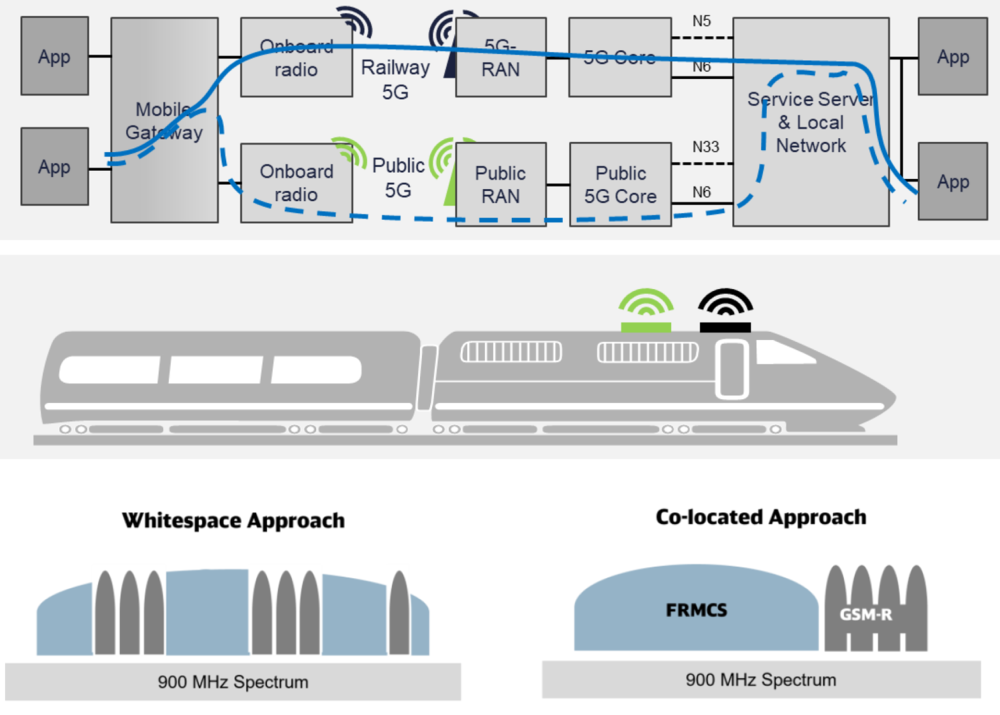
5G-Racom DB & SNCF funding project - FRMCS multipath & GSM-R coexistence
- Funkwerk is on-board partner in the 5G-RACOM funding project with DB and SNCF as consortium leaders.
- To be designed, implemented and tested:
- Multipath function with dedicated FRMCS and public mobile network (test field Erzgebirge).
- Coexistence of GSM-R and FRMCS in the 900 MHz range (SNCF test field). - The project will start at the end of 2022 and is scheduled to run for 3 years until the end of 2025.
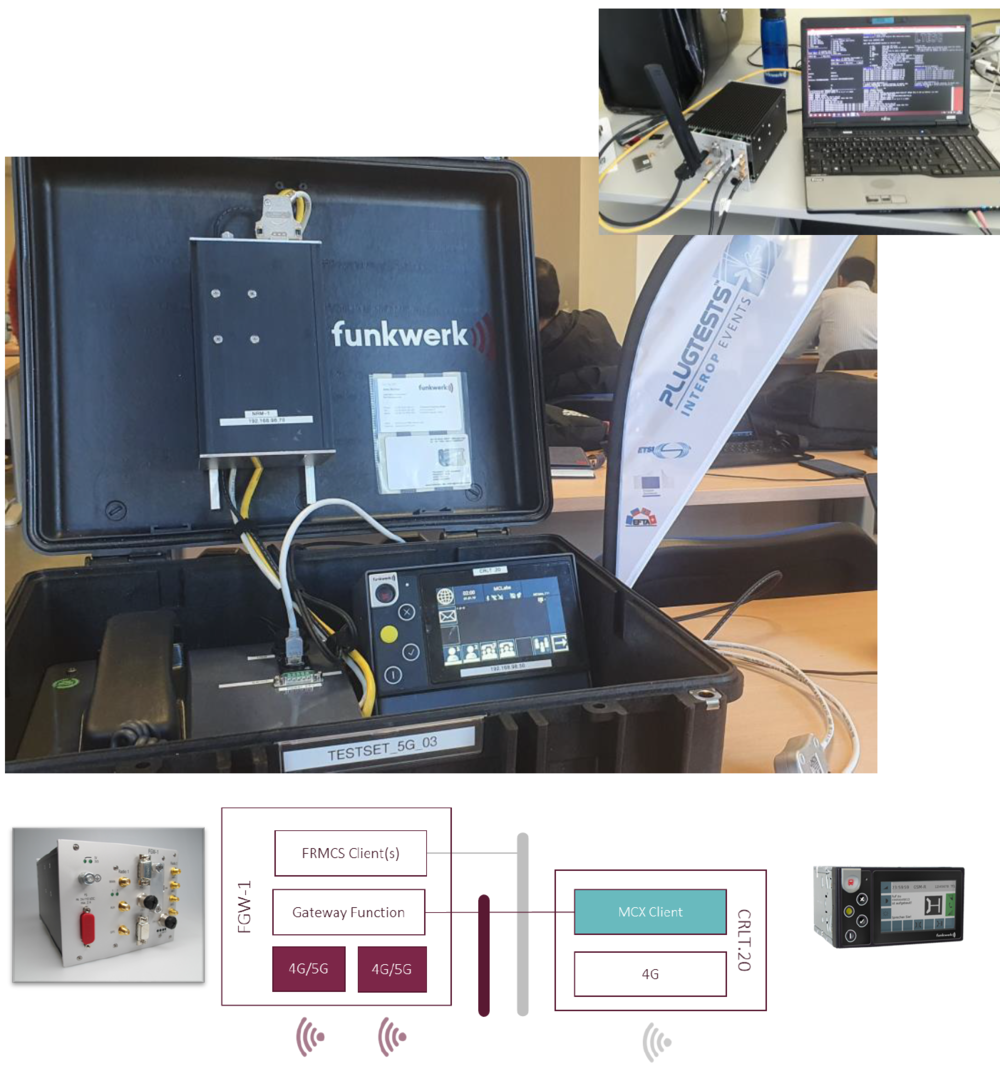
Current setup and equipment for FRMCS test - FGW-1 and CRLT.20
- From the ETSI FRMCS and MCX plug tests 2022 and E2E Erzgebirge.
- FGW-1 as gateway with two radio modules:
- Basic functions OBAPP (pre-FRMCSv1) on GBit ethernet interfaces, auxiliary function via MQTT protocol, implementation of OBAPP according to FRMCS FFFIS v1 in 2023.
- Basic functions Multipath TCP for multi-channel radio via both UEs in
different networks, further development by 5GRACOM.
- Own MCX/FRMCS client (without GUI) based on Linux for connection of data applications such as ETCS/ATO via MCData IPConn, further development of API according to Subset-037-3. - CRLT.20
- Small cab radio with touch panel and audio interfaces.
- Own MCX/FRMCS client based on Android, MCPTT (emergency and group calls, private calls) and MCData (SDS) according to 3GPP Rel-16 with support of functional alias.
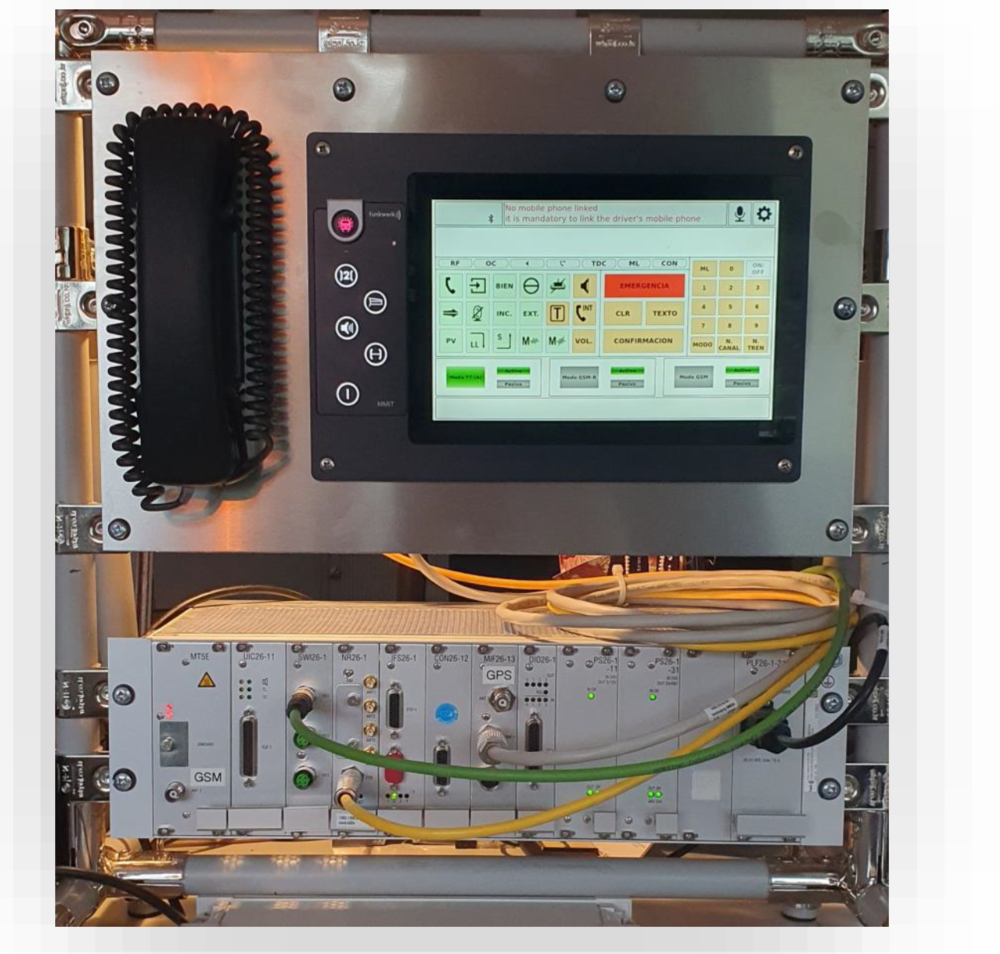
Upcoming setup and equipment for FRMCS tests - MESA®26 with NR26-1 and MMIL
- For development of FRMCS operating mode on MESA 26 and new 10" touch panel MMIL for possible additional applications (from 2023).
- NR26-1 as a mini gateway with a 5G radio module
- Basic functions OBAPP (pre-FRMCSv1) on GBit ethernet interfaces, auxiliary function via MQTT protocol, implementation of OBAPP according to FRMCS FFFIS v1 in 2023.
- Own MCX/FRMCS client on Linux basis for voice radio (feedback-free operating mode) as well as further virtual clients for connection of other loosely coupled data applications.
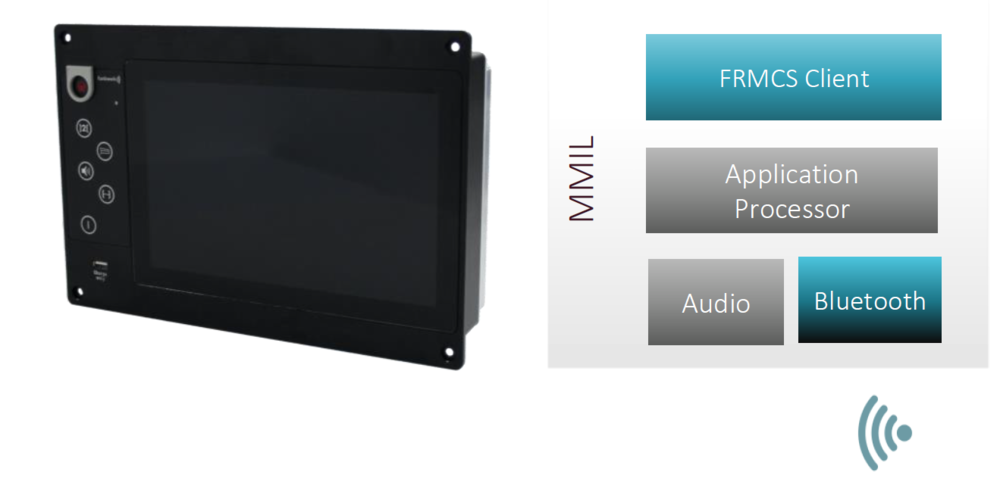
High Flexibility: 10“ - Operator terminal
- MMIL as multifunctional control unit.
- Integrated MCX/FRMCS client based on Linux for voice radio (MCPTT, MCData, MCVideo) with connection to gateway (OB )APP.
- Powerful application processor for third-party application (also with access to a FRMCS network as loose coupled).
- Touch operation, audio, Ethernet and Bluetooth interface.
- Large 10" Colour TFT Display

Funkwerk Train Antenna for FRMCS
- Cooperation between Huber & Suhner and Funkwerk on the issue of migration from GSM-R to FRMCS.
- The novel train radio antenna with two beam elements.
- Separation of the two elements through horizontal and vertical polarization.
- The system of train radio antenna and the Funkwerk MT5E radio module fulfils the requirements of the german technical recommendation Antennas (TE-ANT) of 56dB isolation between two GSM-R systems.
- White paper to explain the facts in completion.






